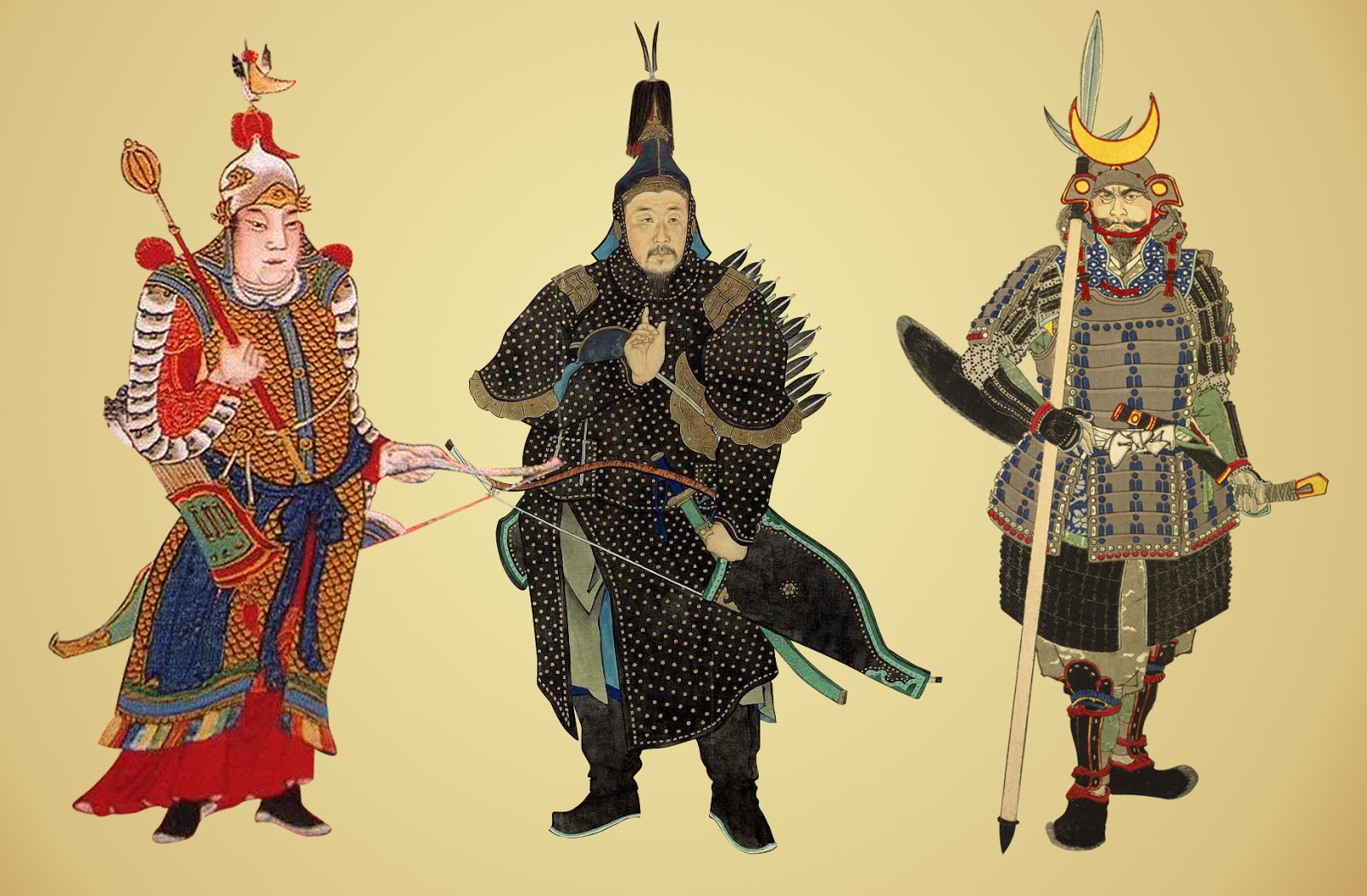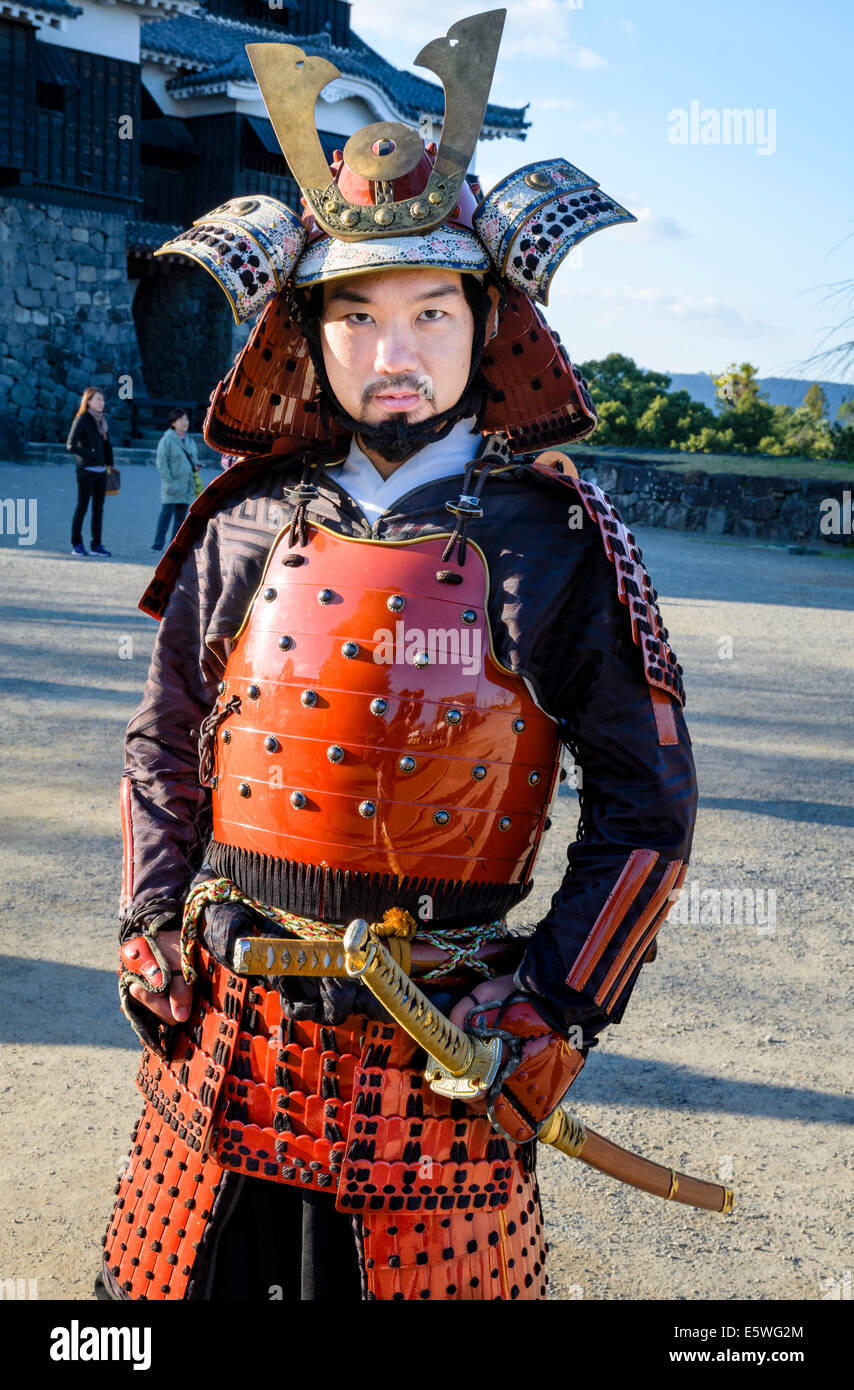
Ming, Qing and Japanese armour components A brief introduction and
Haniwa warrior in keiko armor (Kofun period), c. 6th century, excavated in lizuka-machi, Ota City, Gunma, Japan, terracotta, 130.5 cm high (Tokyo National Museum) Speakers: Dr. Steven Zucker and Dr. Beth Harris.. He's got a quiver on his back, and he's completely covered in a Japanese style of armor known as keiko, plates of armor that hang.

CGTalk Chinese warrior, Tsai jen chich (3D) Chinese warrior
During the Qin dynasty (c. 221 to 206 BCE), Chinese warriors wore elaborate suits of armor, each one consisting of more than 200 pieces. Much of what historians know about this armor comes from the roughly 7,000 life-sized terracotta warriors found in the mausoleum of Emperor Qin Shi Huang (260 to 210 BCE), which appear to be modeled onto distinct, individual warriors.

A Medieval Central Asian Warrior a Nomad in 14thcentury Armor Stands
Japanese armor was meant to protect samurai on the battlefield, but it was also a detailed work of art produced through skilled craftsmanship. Samurai sought.

Xingcai from Dynasty Warriors Fantasy girl, Warrior woman, Dynasty
Ō-yoroi, Kamakura period, 13th-14th century, National Treasure, Kasuga Grand Shrine. A man wearing Samurai armor and jinbaori (sleeveless jacket) turns around, 2019. Scholars agree that Japanese armour first appeared in the 4th century, with the discovery of the cuirass and basic helmets in graves. During the Heian period (794-1185), the unique Japanese samurai armour ō-yoroi and dō-maru.

Ming Female Warrior Chinesearmor Warrior woman, Chinese armor, Warrior
Famous Warrior Armors. Handmade golden takeda clan japanese samurai armor with whit. 3,899.00 USD. Handmade sanada nobuyuki clan japanese samurai armor with bl. 4,899.00 USD. Handmade japanese samurai armor for honda tadakatsu, life si. 3,899.00 USD.

Chinese Fantasy Armor Female armor, Fantasy armor, Chinese armor
Images of the Samurai, Japan's Warriors. People the world over are fascinated by the samurai, medieval Japan's warrior class. Fighting according to the principles of "bushido" - the way of the samurai, these fighting men (and occasionally women) had a profound influence on Japanese history and culture. Here are images of the samurai, from.

Fantasy Female Warrior, Warrior Girl, Female Art, Warrior Princess
Warlords & Warriors Reenacted Heritage Reproduction. Precise reproduction suits of armor modeled after samurai warlords or generals from Japanese history. Each suit of armor is modeled after examples found in museums, private collections, temples, shrines, hidden storehouses of Samurai clans and other historical sources.

Chinese Ming dynasty female warrior Warrior woman, Chinese armor
This is a fairly old book since it was first published in 1996, but it remains the best English-language introduction to the history of the warrior class in ancient Japan. In English, Japanese warriors are usually referred to as 'samurai'. Although this is a Japanese word, it is a term that is not used all that often in Japanese.

Samurai by SBraithwaite on deviantART Female samurai, Warrior woman
Posted 7 years ago. Direct link to Jules93's post "The samurai warrior armor.". The samurai warrior armor is made of heavy metal and was put together with lace, leather, and silk. The armor was made to be sturdy, yet also flexible enough for the warriors to move around more when in battle.

Mongolian warrior armor of the XIXVII century Asian battle Etsy
The armor of a Japanese warrior is known to have evolved from the Korean and Chinese pieces. Helmets and cuirasses were produced in Japan as early as the 4th century. During the years 794 to 1185 of the Heian period, these cuirasses evolved and developed into a more common style of armor that was utilized by the samurai class. It was called the.

Japanese man wearing traditional samurai armour / armor, including
As far back as the seventh century Japanese warriors wore a form of lamellar armor, which evolved into the armor worn by the samurai. The first types of Japanese armor identified as samurai armor were known as ō-yoroi and dō-maru. These early samurai armors were made from small individual scales known as kozane.

ancient chinese costumes for men chinese armor costume chinese warrior
Samurai: Japanese arms & armour. The word samurai derives from the term meaning 'one who serves' and refers to those allegiances to the military groupings which evolved around the 10th century to protect and expand their provincial domains. They had a profound effect on the military and political state of the country, but they also formed.

Female Armor, Female Character Design, Character Design Inspiration
This included the addition of certain pieces such as the menpo (chin strap). 1. Samurai Helmet. Japanese Samurai Helmet, 18th Century, Met Museum. Perhaps the most distinctive and recognizable piece of the samurai's armor is the helmet or kabuto. The unique design of the Japanese warrior's helmet makes him instantly recognizable as a.

Ming dynasty warrior Dynasty warriors, Historical clothing, Chinese
Free U.S. Shipping. 2,999.00 USD. Add to Cart. Traditional Samurai Armor Samurai Armor Costume Authentic Samurai Armor Female Samurai Armor Full Samurai Armor. Embark on a captivating journey through time with our extraordinary Ancient Japanese Warrior Armor collection, an homage to the bravery and heritage of the samurai.

Pin by Rockyedge on Orkin/goblins in 2020 Warrior, Chinese armor
This suit of armor is a type known as "modern equipment" ( tosei gusoku ). A full set of "modern equipment" armor consists of a body protector, helmet, and an iron mask. Less cumbersome than older armor types, this type was developed in the 1500s to maximize the soldier's ability to move easily in battle and to protect him from musket.

Pin on Samurai
Zhou & Qin Armour. By the middle of the Zhou dynasty (1046-256 BCE) a more flexible armour was devised, made of small overlapping rectangles of leather held together using leather thongs, hemp cord or rivets, and made into the form of a tunic. Each piece of leather was hardened by tanning and lacquering.